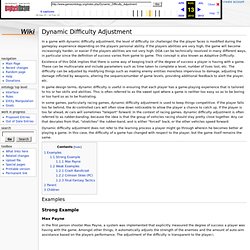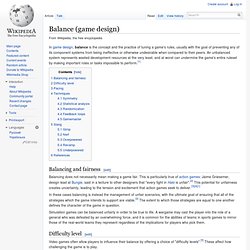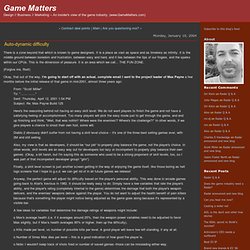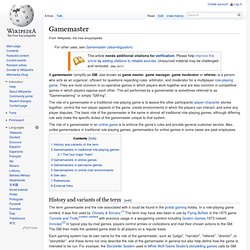

GoetschalckxEtAl.pdf (application/pdf Object) Save replays in unity. Infinite_adaptive_mario [Slug Wiki] Infinite Adaptive Mario Download: here Requires: Java 1.6 Controls: arrows to move, 's' to jump, 'a' to run Recently, there has been increased interest in building games that dynamically adapt to players.
![infinite_adaptive_mario [Slug Wiki]](http://cdn.pearltrees.com/s/pic/th/infinite-adaptive-mario-slug-5626051)
One of the common approaches to building adaptive games is dynamic difficulty adjustment. However, most of these approaches are limited to parameter tweaking such as adjusting weapon strength or reducing spawning times, and do not modify levels in response to difficulty adjustment. My system attempts to overcome this limitation by incorporating parameter tweaking into procedural content generation.
Infinite Adaptive Mario expands on Markus Persson's Infinite Mario by adapting to the skill of the player. The player begins at level 50, which produces levels with a moderate degree of challenge. The best way to get a feel for how dynamic difficulty works in Infinite Adaptive Mario is to try it out for yourself. Levels generated at the easiest and most challenging difficulty settings: Game with DDA.
Adaptive microcomputer controlled game. Dynamic Difficulty Adjustment - Gameontology. From Gameontology In a game with dynamic difficulty adjustment, the level of difficulty (or challenge) the the player faces is modified during the gameplay experience depending on the players personal ability.

If the players abilities are very high, the game will become increasingly harder, or easier if the players abilities are not very high. DDA can be technically resolved in many different ways, in particular since the definition of success varies from game to game. This concept is also known as Adaptive Difficulty. Existence of this DDA implies that there is some way of keeping track of the degree of success a player is having with a game. In game design terms, dynamic difficulty is useful in ensuring that each player has a game-playing experience that is tailored to his or her skills and abilities. In some games, particularly racing games, dynamic difficulty adjustment is used to keep things competitive. Examples Strong Example Max Payne Weak Examples Crash Bandicoot Crimson Skies (PC)
Balance (game design) In game design, balance is the concept and the practice of tuning a game's rules, usually with the goal of preventing any of its component systems from being ineffective or otherwise undesirable when compared to their peers.

An unbalanced system represents wasted development resources at the very least, and at worst can undermine the game's entire ruleset by making important roles or tasks impossible to perform.[1] In these cases balancing is instead the management of unfair scenarios, with the ultimate goal of ensuring that all of the strategies which the game intends to support are viable.[2] The extent to which those strategies are equal to one another defines the character of the game in question. Simulation games can be balanced unfairly in order to be true to life. Video games often allow players to influence their balance by offering a choice of "difficulty levels".[5] These affect how challenging the game is to play.
Symmetry can be undone by human psychology. Game Matters: Auto-dynamic difficulty. There is a zone beyond that which is known to game designers.

It is a place as vast as space and as timeless as infinity. It is the middle ground between boredom and frustration, between easy and hard, and it lies between the tips of our fingers, and the sparks within our CPUs. This is the dimension of pleasure. It is an area which we call... THE FUN ZONE. (Forgive me, Rod!) Gamemaster. A gamemaster (simplify as GM, also known as game master, game manager, game moderator or referee) is a person who acts as an organizer, officiant for questions regarding rules, arbitrator, and moderator for a multiplayer role-playing game.

They are most common in co-operative games in which players work together and are less common in competitive games in which players oppose each other. The act performed by a gamemaster is sometimes referred to as "Gamemastering" or simply "GM'ing". The role of a gamemaster in a traditional role-playing game is to weave the other participants' player-character stories together, control the non-player aspects of the game, create environments in which the players can interact, and solve any player disputes. The basic role of the gamemaster is the same in almost all traditional role-playing games, although differing rule sets make the specific duties of the gamemaster unique to that system.
History and variants of the term[edit] The four major "hats"[edit]